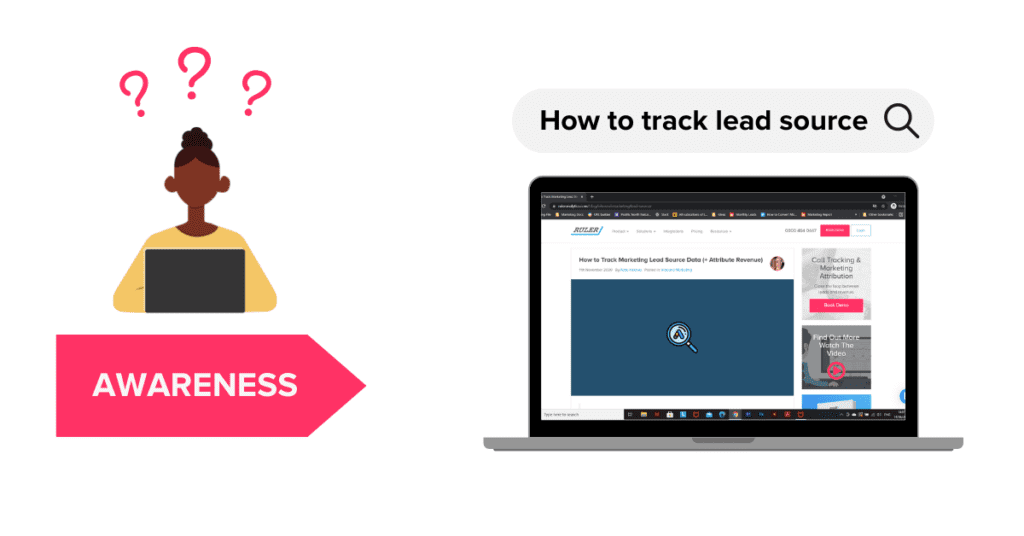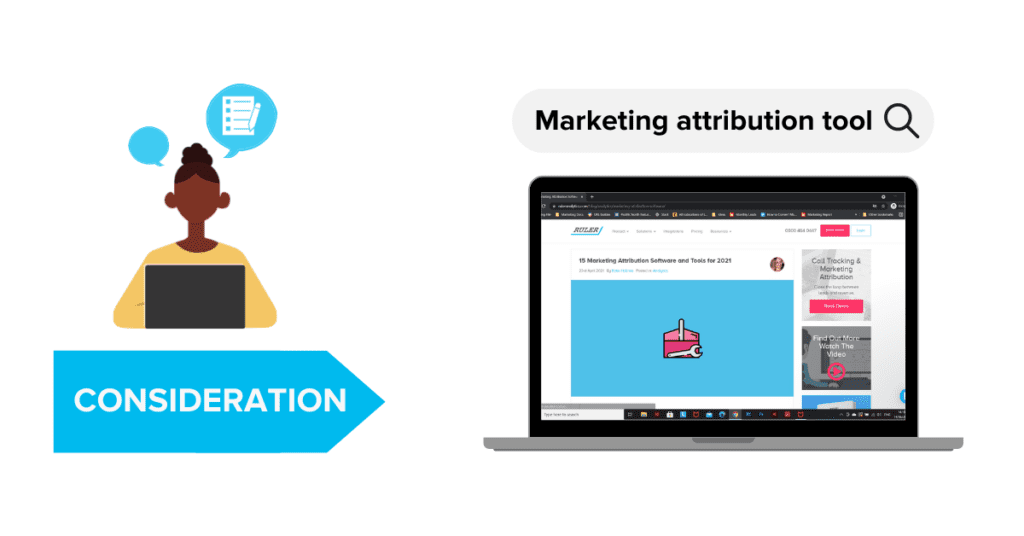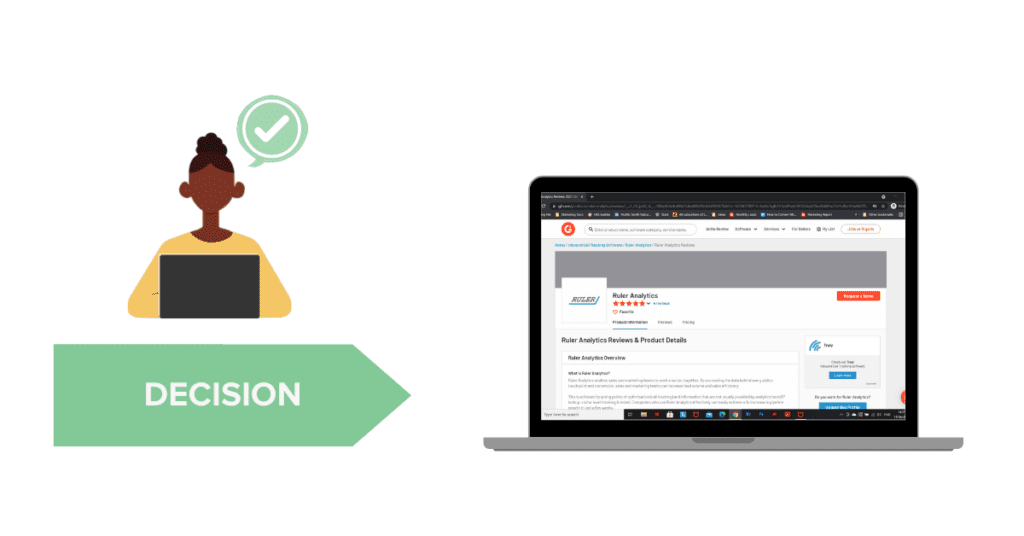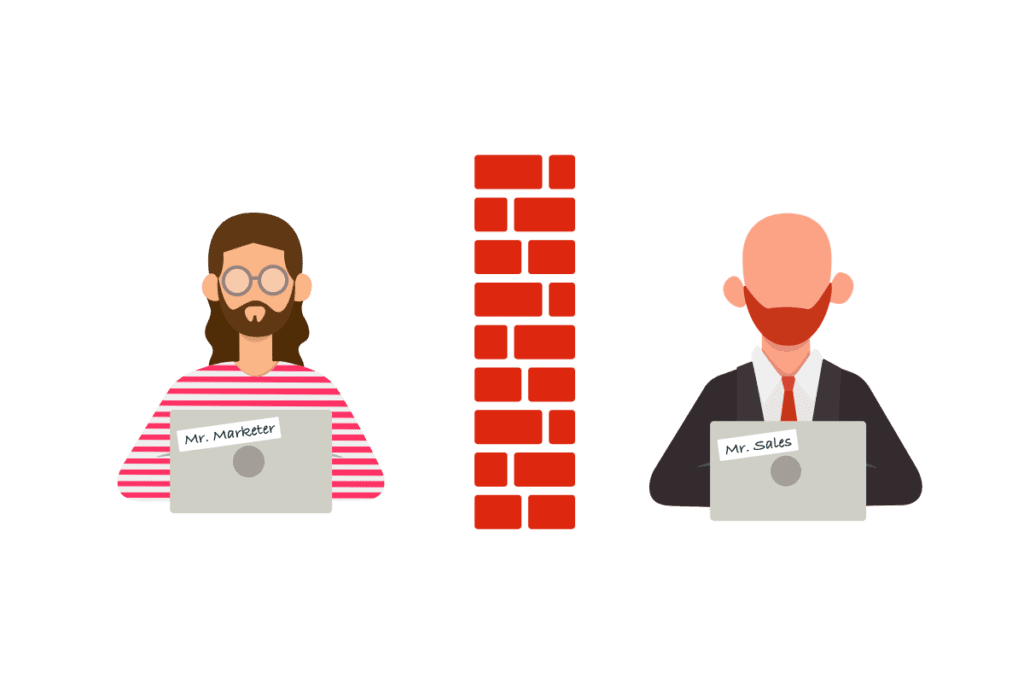Looking to learn how to create a lead generation funnel that can support your business to create consistent leads month on month? Keep reading for top tips that will help you drive high-quality leads.
Leads are the lifeblood of B2B companies. Without them, they can’t operate.
But how do B2B companies generate leads for their business?
It’s simple, a lead generation funnel.
But don’t worry. Creating a lead generation funnel from scratch doesn’t have to be scary.
Keep reading and learn:
💡 Pro Tip
Want key tips and tricks to drive more high-quality leads? Download our eBook on lead generation and tracking to get more from your marketing.
A lead generation funnel is a systemic process to generate leads.
You reach your target audience and guide them into the top of the funnel.
From there, you draw them down the funnel until they eventually make a purchase.
Lead generation funnels generally have three main stages. Let’s walk through them one by one.
Your lead generation funnel is made up of three stages and each stage has a key role to play.
Generally, a lead generation funnel can be broken down into:
The top of the funnel is all about generating awareness.
It’s the first time your target audience encounters your brand or website. The content you need to share in this stage includes blogs, videos and podcasts.
Remember, at this stage, the user is looking for a solution to a problem.
It’s your job to present answers to these questions and position your business as a leader in the sector.
⚡️ Pro Tip
Each stage of the lead generation funnel could be made of multiple (maybe even hundreds!) of marketing touchpoints.
Read up on what a marketing touchpoint is before delving into this blog.

Hopefully, by now, you’ve proved that your business has knowledge in the area your prospect is searching for.
Now is where you need to nurture them. You want to convert those people into leads.
You can do this through downloadable content like eBooks or whitepapers.

The final stage of the funnel is where you want to convert interested leads into sales.
At this point, they trust you and just need that final push to become a paying customer.
You could use a paid offer or case study or review to help convince those leads to convert.
💡 Pro Tip
Still not sure how the customer journey works? Enrol in Attribution Academy and see the process in even greater detail.

We’ve broken down making a lead generation funnel into 5 easy to follow steps.
Let’s go into each step in a bit more detail.
The first step of your lead generation is to map your customer journey. The issue with this is that you could have multiple entry points e.g. social media, organic content or PR.
Related: How to track your customer journeys
Try your best to understand where the majority of your website traffic comes from.
From there, try to imagine what a prospective customer is looking for. If your top channel is an organic blog, then maybe the next logical step would be to get them to download an eBook.
Try to plan obvious routes that will help drive traffic to leads, and leads to conversions.
💡 Pro Tip
The best way to map your customer journey is to look at what’s already working. With a marketing attribution tool in place, you can see which channels are working hardest to drive your revenue. With that knowledge in the back, you can better determine your customer journey.
👉 Book a demo of Ruler to see it in action.
Now your customer journey map is in place, you’ll want to create content to fit each stage. Identify your main topics and plot content ideas based on whether they’re top of the funnel or bottom of the funnel.
For example, a client case study would be bottom of the funnel while a podcast on a broad topic would be top of the funnel.
Get smart with your content and use it to connect with your audience.
And remember, all that great content you already have can be put to use too. Go over your current content with a fine-toothed comb and start filtering it out by stage.
Once you know which content piece sits where you can finetune it. So, for top of the funnel pieces, you can look at developing them for reach. And for bottom of the funnel pieces, you can optimise them for conversions.
✏️ Note
Not sure what conversion rate you should be aiming for? Take a look at our conversion benchmark report for the inside scoop.
Now you’ve got a set plan in place for how prospective customers will filter through your funnel, the next job is to get them into your funnel.
💡 Pro Tip
With the right data in place, you can easily identify which content is driving the most leads and sales for you as part of the full customer journey.
Ruler will share closed revenue on a channel, campaign and even landing page level. Learn how Ruler attributes revenue back to your marketing here.
You might find a particular landing page works best to drive the beginning of your funnel.
dSo, why not trial some paid activity to that page to kickstart the customer journey for other prospects?
By having this data to hand, you can make easy data-driven decisions to help optimise your marketing.
Related: How Ruler Analytics can help you optimise your marketing strategy
Remember we talked about planning your customer journey.
You might have found some opportunities to create downloadable content like eBooks and guides. These are the perfect way to create leads.
But you’re not just limited to gated content. You can use forms, live chat tools and product landing pages to drive your conversions too.
Just remember, you need to ensure you’re adding the right CTAs to the right content.
And when they do convert, you need to host your leads in one central place.
A CRM is the most obvious choice, but some marketers prefer to keep track of their leads in a Google Sheet or Excel spreadsheet.
Related: How to track your leads in a Google sheet
However, you choose to collect your leads, remember to get the data your sales team will need to qualify them.
We usually ask for:
This gives us a good insight into who is enquiring and engaging with our content.
Now your leads details are in your CRM, it’s up to your sales team to convert them.
But this isn’t where marketing withdraws.
Ordinarily, sales and marketing sit on either side of a wall. Marketing generates leads in their funnel and throws them over to sales to drive through their own funnel.

The lead generation funnel is something sales and marketing can work on together.
By driving towards the same targets, sales and marketing can work together to bring in more revenue.
Related: How to achieve sales and marketing alignment
So by now, you’ve mapped your lead generation funnel. But there’s more work to be done. You can’t create your funnel and then leave it. You want to ensure you’re optimising your funnel and the content within it on a consistent basis.
Here are a few ways you can do that.
Data is your best resource when it comes to optimising your lead generation funnel.
Imagine if you could see which channels, campaigns, and landing pages were best supporting your lead and revenue growth. Well, with Ruler, you can achieve exactly that.
You can link your closed revenue back to your marketing.
This will give you valuable insight into what’s working so you can quickly scale for a lower cost.
Because remember, all leads aren’t created equal. But with Ruler, you can optimise for the leads that drive the most sales.
There’s a whole host of lead generation tools out there that can support each stage of your funnel.
Implementing tools that you might be missing can completely alter your lead generation process.
Lead tracking tools are particularly useful for gain a single view of the customer journey.
Lead quality is about more than just a person passing over their contact details. Not all leads are created equally.
You need to assess all of your incoming leads to see if they’re ready to be passed onto sales.
Those that download a case study for example are much more sales-ready than those who download a broad guide to a topic that’s not directly related to your proposition.
You can also continue to qualify leads based on their interactions post-download too.
For example, if they open your nurturing emails and click on links, then chances are they might be ready to speak to a sales rep.
And there you have it. A total guide to building a lead generation funnel from scratch plus some tips on how to optimise your funnel once you’ve created it.
Remember, the best way to optimise your funnel is by getting the right data in place.
With marketing attribution, you can understand which leads (from which channels and campaigns) are driving sales and see how much revenue they bring in.
Ruler Analytics can help you get true visibility of your data and allow you to make data-driven decisions.
Find out more by booking a demo with our team to see the data in action. Or, download our eBook on lead generation and tracking to see how you can get started with lead generation.